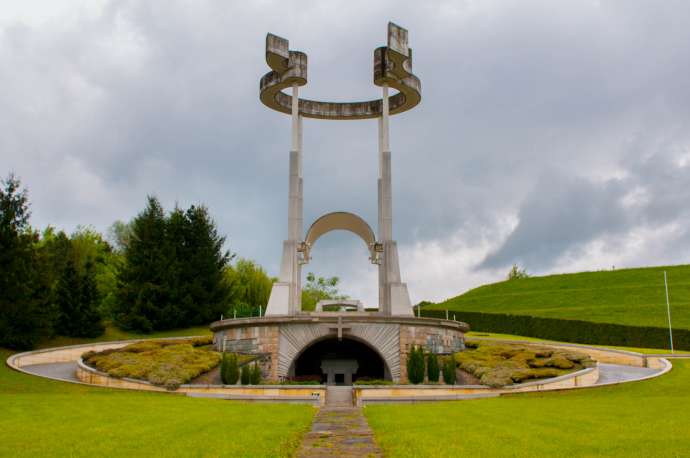STA, 6 October 2019 - Retired Celje Bishop Stanislav Lipovšek stressed at the annual Teharje ceremony remembering an estimated 5,000 victims of war and post-war summary executions the need "for true reconciliation with the past" if Slovenia wants to build a safe and happy future.
Addressing the ceremony in the Teharje Memorial Park (Spominski park Teharje) near Celje on Sunday, Lipovšek said 74 years were passing this year since the end of World War 2, 50 of which passed in forced silence and an guided concealing of the truth about events during and following the war.
While speaking of 600 execution sites around the country as proof of that, Lipovšek expressed gratitude to all who made sure that these sites are finally being tended to and that Slovenia is approaching the basic civilisational norm of giving the dead the right to a name and a grave and the living the right to remember.
Mass Graves in Slovenia: An interactive map
"For a lasting an true peace and a future of our nation, a reconciliation of with the past is vital, since we cannot build a safe and happy present time and future without making sure true reconciliation with the past occurs.
"Reconciliation is only possible if we're willing to forgive. And forgiveness is only possible when we're ready to admit the truth, no matter how painful, difficult and burdensome it may be. Only the truth sets you free," Lipovšek said.
The ceremony was also addressed by researcher Slavko Žižek, who said "no nation can survive with a burden that began with the murder of several hundred victims in the autumn of 1941 and spring of 1942 and ended with the executions of thousands at the end of the war".
He rejected the continuing accusations of treason, collaboration etc, saying that the "only sin of these people was to resist the terror of the red star".
Many had to leave Slovenia because of their "love of God, of the nation, homeland and life" and they managed to preserve the Slovenian language and love of the homeland and transfer them to their offspring, which "simply does not square with the definition of treason", he said.
Among the victims the Teharje Memorial Park pays respects to were members of the Home Guard, a militia that collaborated with the Nazis; soldiers; civilians; and refugees from Croatia and Serbia apprehended by the Allies in May 1945 in the northern Koroško region as they were fleeing north.
Book: Post-War Massacres in Slovenia
The Allies turned them over to the Partisans, who brought them to the Teharje barracks, a facility formerly used by the Nazi Germany military.
In the subsequent two months, some 5,000 people were killed without a trial on several locations nearby Teharje, including the notorious Huda Jama mine shaft near Laško.
It took a long time until the locals dared to speak about what had happened. Many mustered the courage to speak up only after Slovenia gained independence in the early 1990s.
A memorial park was inaugurated at the site of the former barracks in 2004 but it still not fully finished.







